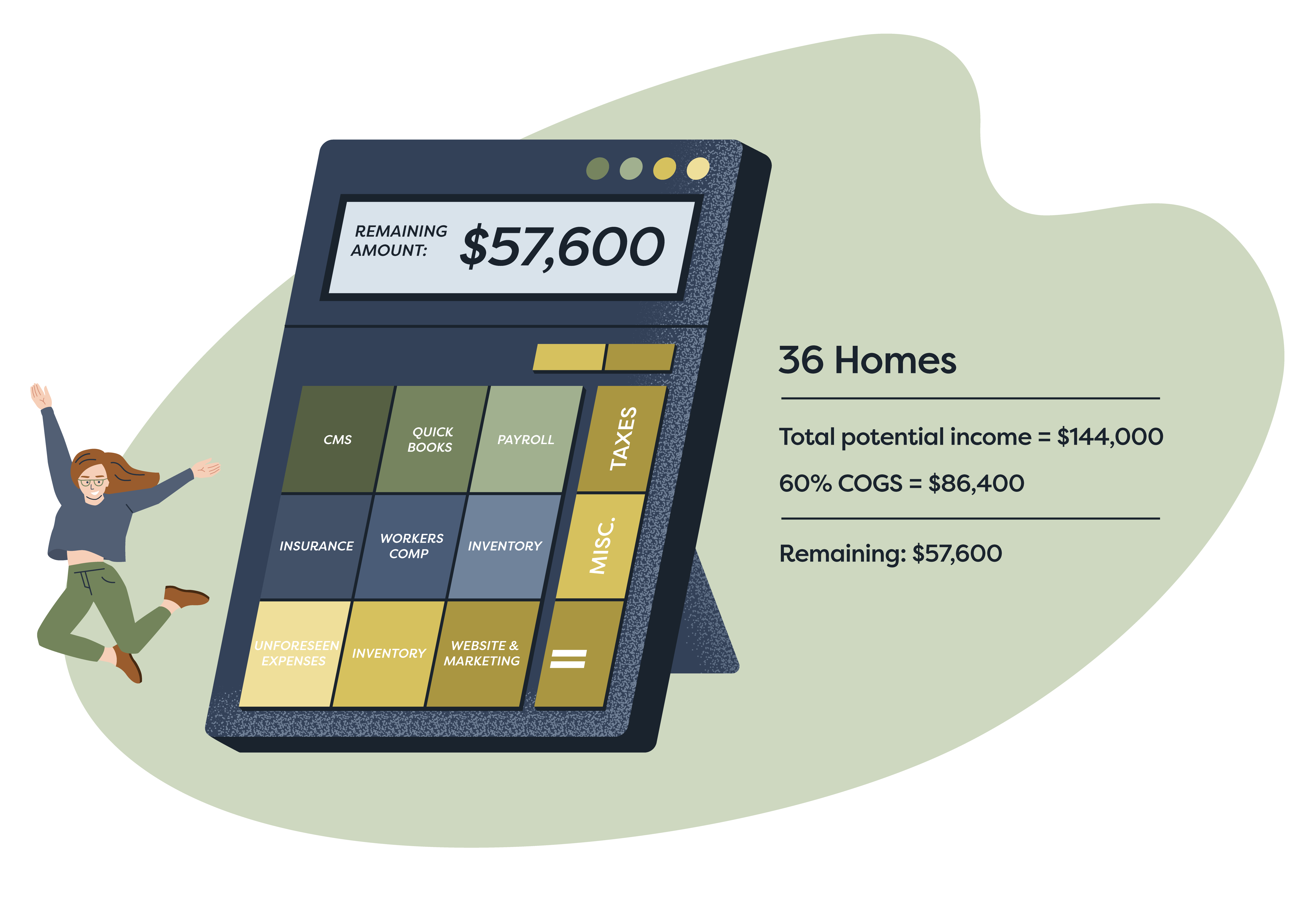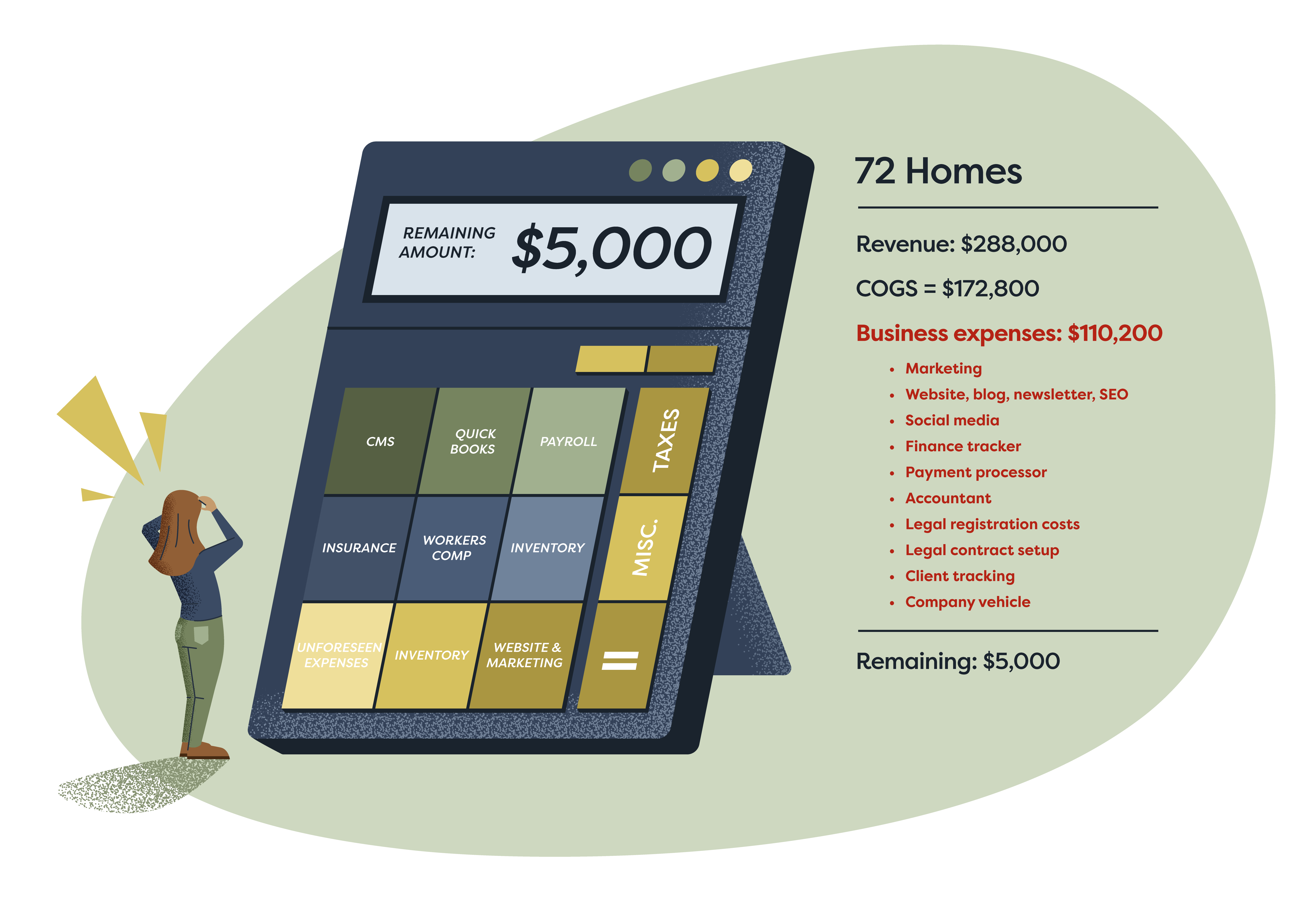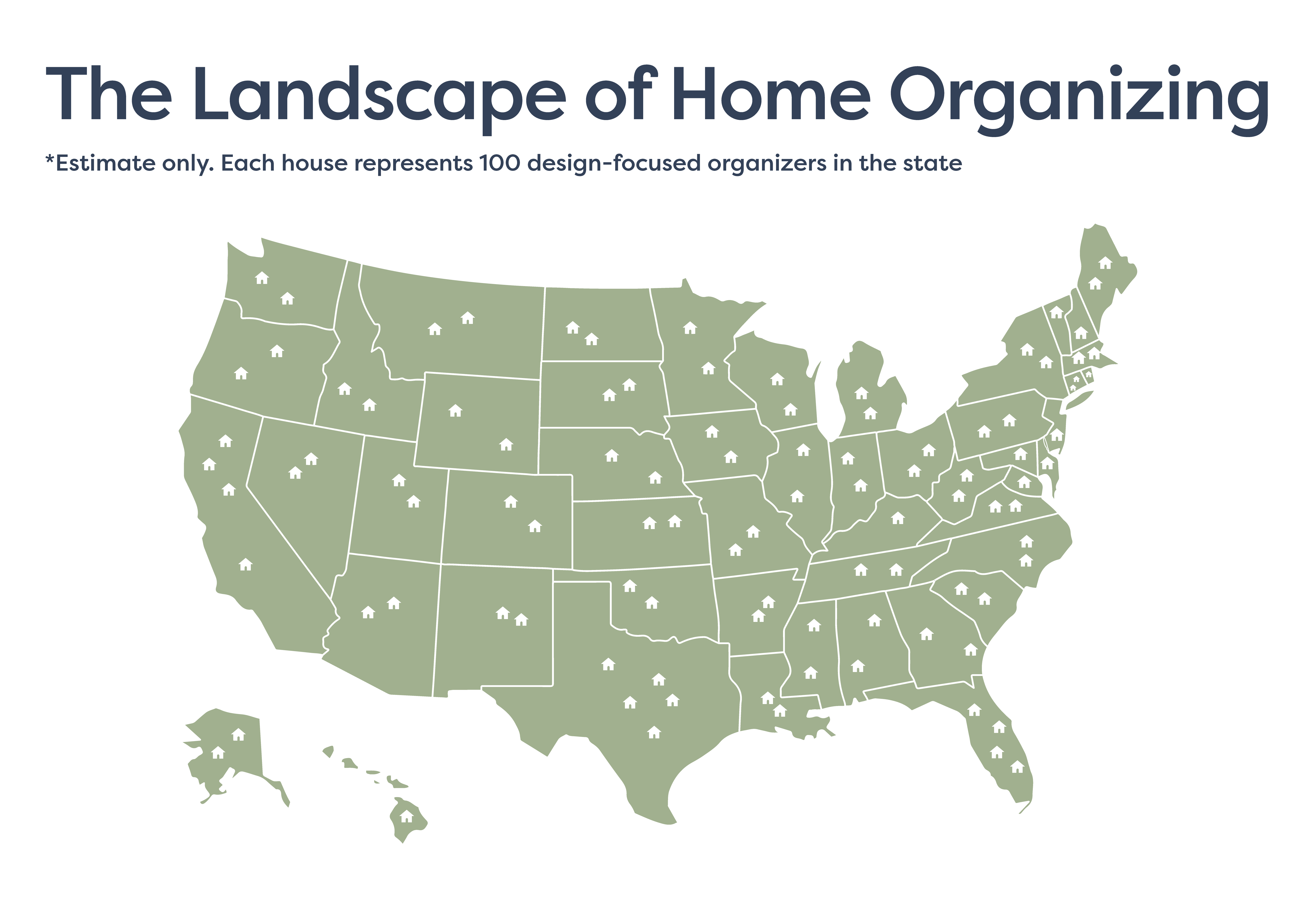Inside the business of home organizing: The growth paradox
This is the final in a three-part series about the business of home organizing.

Click here to read Part I and here to read Part II.
It’s exciting—and daunting—to be starting a home organizing company. Exciting because we’re launching a new industry, offering new ways to value work done in homes, and expanding the scope of professional household labor. Daunting because there are thousands of organizers across the country, and we’re all still figuring out how to make this a professional business.
The market and demand for home organizing exists.
Clients and researchers agree—living in an organized home feels better and reduces anxiety. Organizers are making money and popping up across the country. But there is a catch—we’re not sure if home organizing alone can result in profitability to the levels that the “Pinterest perfect pantries” might lead observers to believe.
On its face, starting a home organizing business is relatively simple. If you are good at organizing and can find your first few clients, the hardest early parts can be picking your name and deciding how to register your business. It’s a lot of work to get the first 40 clients, but once you’ve established your reputation and built a small team, it feels great.
From that early success, it seems reasonable to expect that if you can double your clients—and your efforts—your income will also double (obviously!). We’re still gathering information and talking to other organizers, but we think this is when the paradox and pitfalls of organizing begin. Growth seems so simple, but growth by scaling comes at unexpected costs.
Today, we’re talking about how organizers can achieve that elusive profitability!

Growth by scaling is alluring.
So alluring that for the last year, we tried it at Reset Your Nest—and our first attempt failed.
When Jen Martin hired me in January 2022 to help grow Reset Your Nest, we started operating at full throttle. We started with three Leads and about ten people delivering our signature home transformation services. Fast-forward to the end of the year and we had seven Leads and two dozen team members. Together we served just over 100 clients and cleared a company revenue of $880,000. Don’t celebrate with us just yet—it all looks and sounds great, but it came at a higher price than we expected.
The challenge was that our overhead costs to create these teams; establish a company; create training materials; pay team members for training time; build out marketing materials; manage, track, and store inventory; and coordinate payment of invoices and payroll outpaced our revenue. We ended the year with a loss because paying for the technology stack platforms and creating the systems we needed for growth cost more than the revenue we made.
Below are our annual back-end costs, shared transparently to demonstrate how costly (and quickly) these expenses add up. Some of these numbers are on the high end because we set out from the beginning to create a system that would grow with us. While the numbers are different for every owner we’ve spoken with, what we find consistently is that each owner has to figure out how to cover these tasks. This can happen by manually working late into the night and on precious weekends, or, like us, it can come at the cost of spending money on a back-end tech stack.
- Cost to manage clients (hours or software); we use HubSpot for our CRM: $12,000
- Training for organizers: $30,000
- Quickbooks tool and accountant: $80,000
- Payroll and invoice support and people ops team; we use Rippling: $90,000
- Insurance (advised) and workers’ comp: $15,000
- Inventory software and team: $140,000
- Office and inventory storage: $30,000
- Website, business fliers, business cards, and marketing support or tools: $90,000
- Total: $487,000
As we added in the costs of labor, products, additional team management support, inventory management, training, and office items, our spending outgrew our income.
Our revenue nears $1 million and looks great, but at the end of the day, a business needs to make money to survive, let alone thrive, and those initial costs are too high to sustain. We wondered if we were alone—did other organizers experience the challenge of trying to scale only to realize the back-end business expenses or personal time necessary to run it all on a shoestring budget didn’t add up?
To answer this, we searched last year’s market survey data. That’s when we began to understand an important insight. Home organizing is a service that doesn’t scale exponentially. It doesn’t even scale linearly: it grows slowly with grit and hustle and often peaks when the amount of time or money caps out.
Hiring more people or working more homes comes at the cost of managing those additional people and larger inventory orders. More business means more work and costs, sometimes outpacing the business and driving losses. This is the growth paradox. Services don’t scale, and when organizers try to do more, they often end up making less.
Based on the data we have gathered, we believe most founders of organizer-focused businesses are not able to make six-figure salaries after their business expenses are paid, even when they are making revenue above $250,000. Considering we are operating in an industry that we estimate to be generating at least $400M for existing services, the lack of profit to individuals is the painful elephant in the room.
Our survey indicated that the average small-team income is between $40,000 and $60,000. Below is a chart with the self-reported take-home income from our survey. (For more information about how we conducted this survey, see Part II.) The majority of organizers take home much less than $40,000.

Forty thousand dollars sounds okay until you start thinking about how much work is required to pull this off. These successful organizers are easily clocking 80-hour work weeks. You have to have this kind of hustle the first few years to get it working and to get clients to commit to the job. Broken down, they’re lucky if they are averaging $14 an hour!
To illustrate why growth is hard, let’s explore the costs of business for two organizers. It will help to illuminate where the paradox of growth happens.
The way the home organizing industry is currently set up, many small-scale organizers are best served by growing to a small team of 3–4 organizers to build a steady stream of word-of-mouth business serving 2–3 clients a month. This maximizes their own personal take-home profit as a reflection of the amount of time they work on the business.
For an early starting organizer, her business might begin with a goal to serve 4 clients a month, or 36 homes a year. This is not easy, but with hustle for our hypothetical Organizer 1, it’s attainable.

Imagine Organizer 1 is able to reach 3–4 homes a month for about $4,000 per home. On her own she could make $16,000 a month. As long as her business doesn't grow past that, the organizer can manage all of their own small-scale finances, drum up business at minimal marketing cost, track that volume of clients without expensive CRM software, and maintain inventory sufficient for these jobs and pay a few friends to help. It's 60+ hours some weeks and a TON of work, but at the high end of clients, the numbers look good:
- Total potential income: ~$144,000 for 36 homes at $4,000 each
- 60% cost of goods sold and labor to her small team (COGS): $86,400
- Remaining: $57,600
Note that this $57,600 might all be take-home income, or the organizer might opt to invest some of it back into the business.
Now, imagine this first organizer’s business isn’t quite as successful as she had hoped. At the lower end, if she isn’t as successful as she hoped at attracting clients, she may serve only one or two clients a month. After working to get our Reset Your Nest team of independent organizers started, let me acknowledge this still represents an organizer who is working hard to establish her business! If this more accurately represents Organizer 1’s volume, her business may look like this:
- Total potential income: ~$60,000 for 15 homes a year at $4,000 each
- 60% cost of goods sold (COGS): $36,000
- Remaining: $24,000
The paradox is that most organizers I meet consider this the starting point and are anxious to talk about how to grow their business from here.
Organizers who look like our first example recognize that getting to this level of profitability requires time and money. They imagine that if they can serve twice as many clients, their profit can double. So they start investing in their business by spending money on operations efficiencies, including:
- Marketing
- Website, blog, newsletter, SEO
- Social media
- Finance tracker
- Payment processor
- Accountant
- Legal registration costs
- Legal contract setup
- Client tracking
We have spoken candidly with dozens of organizers who have businesses that look profitable and enjoy a highly positive reputation but are spending sizable earnings to maintain that outward image while privately hoping at some point the work to build this service business will pay off eventually.
In those first couple years, an organizer might be working crazy hours, but they are looking at the upside and thinking about growth as a function of scaling their business. There is a false narrative that more clients will result in a 1:1 conversion to more money. Unfortunately, the tactics that make an organizer money with a few clients aren’t sustainable when they continue to grow.
What really happens when organizers decide to grow?
Consider Organizer 2, who sticks with it and decides to expand. In her case, the profit gets worse per hour spent, not better, because there’s a lot of time spent doing the behind-the-scenes work. The image below illustrates what can happen when Organizer 2 seeks to grow—she spends the majority of their profits on the business and doesn’t personally see the money she’s worked so hard to make. The back-end costs go up quickly and Organizer 2 is left with a much smaller take-home amount. We think it’s important to be direct about these costs so that others who want to grow past a small-scale business have a clear understanding of the costs and work involved.

What growth looks like for Reset Your Nest
After spending a year in the “growth paradox” I want other organizers to know that if they’ve experienced these pain points, they are not alone. Jen Martin saw the potential to scale and train other fantastic and talented organizers to deliver her home organizing method. Yet, as soon as her focus moved to scaling, the whack-a-mole challenge of running the business began.
Once Reset Your Nest’s capacity expanded, the obvious and inevitable next step became attracting more clients to fulfill the hours that the team members now expected to work each week. All the marketing, sales, and communication work became paramount, and often at more expensive rates than previously obtained through a slow word-of-mouth growth campaign.

As we looked around at the Home Sort HT: Summit Conference in September, we saw hundreds of other women solving the same problems and paying the same back-end business costs to create similar processes. We all had unique approaches, but the basics of attracting, selling, servicing, and invoicing a client were all remarkably similar.
Working from the top-line estimates that we created in Part I of this series, we estimate that each state has, on average, at least 100 organizers working to create successful home organizer businesses. In line with Part II, we estimate that as many as 500 independent organizers across the country may have found ways to make more than $100,000 in personal (profitable) income. The remaining 4,500+ organizers are likely taking home less than $50,000—and digging into those profits in order to grow.

Imagine that more than five thousand of us are scattered across the US without being as transparent as we could be about the costs of trying to scale!
That’s why we decided to take a big risk and start talking about it. The current state of business is grim—a lot of money is being spent by every individual on a lot of the same back-end processes and tools. But there’s a solution: if we work together, we could solve the growth paradox, spend wisely on shared tools, and create wealth.
And there is potential to distribute that wealth collectively—not just to the founders, but also to the teams of amazing organizers who are working so hard to deliver magical home organizing experiences to our clients. In bringing other independent organizers on board, Reset Your Nest is seeking to do just this: share the costs across the board so that individuals aren’t losing their profits to back-end necessities, and ensure that every member of our team takes home a fair wage.
This is the final piece in this series on the business of home organizing—but that doesn’t mean it ends here! Read on to hear about the business of hiring a team as a bonus to the business series.
